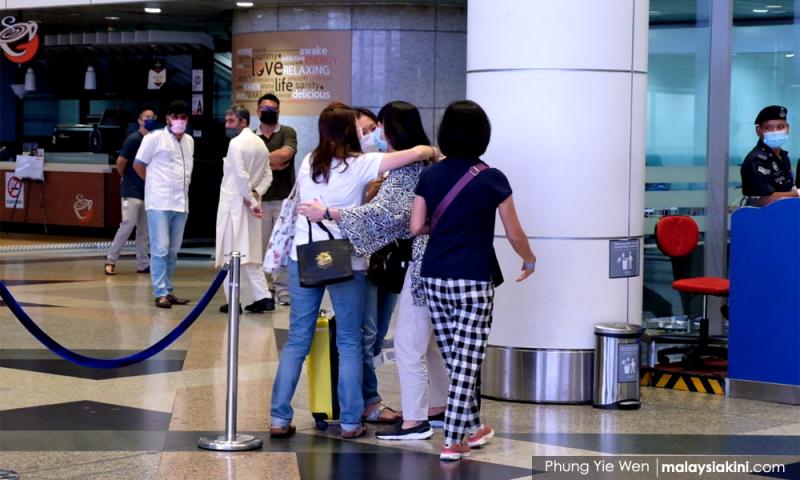LETTER | M'sia should explore railway VTL to S'pore
LETTER | The commencement of the Malaysia-Singapore Vaccinated Travel Lane (VTL) on Nov 29 marked the end of border closure between two countries since March 2020.
Although travellers must abide by specific regulations such as pre-departure and post-arrival Covid-19 tests, waiver of the quarantine period has eased the financial burden of many parties and made it more feasible for individuals to travel.
In addition, the launching of VTL also signifies the reconnection of friends, lovers, and families after breaking apart for two years. It brings warmth, joy and hope for the stranded.
Indeed, travel across the causeway would not resume to the good old days yet, where cars, motorbikes and even pedestrians can cross freely because of Covid-19 concerns, as well as the new Delta and Omicron variants.
Nonetheless, both governments reconvened the commuting through two types of transport arrangements: land by buses and air by flights.
These arrangements are a good start to turbine people's mobility, but authorities should be more proactive in utilising every measure to provide stranded citizens with more chances to go home.
According to unofficial statistics, there are 500,000 Malaysians who have been stuck in Singapore since the circuit breaker was imposed. Among them are wage earners and students who used to commute daily between the Johor Bahru and Woodland causeways.
Railway VTL an affordable, efficient option
With existing flight and bus options, it will take a long time to provide a ticket quota to everyone stranded to go home.
Based on flight companies’ information, only six airlines with 14 flights offer the VTL ticket daily. An aircraft can carry an average of 200 passengers, making the maximum VTL passengers 2,800 persons a day.
On the other hand, the official statement claimed the daily quota of land VTL through buses is 3,000 persons a day, with a potential review of increasing the capacity and the situation.
A simple math calculation gives us roughly 5,800 persons who can go back to Malaysia daily with existing VTL policies. A rough assumption tells us that it will need a total of nearly 90 days to give a chance to every Malaysian to travel back.
Above all, we should consider the cost differences between the two VTL options, as it means different affordability considerations for different groups.
The government is urged to utilise the train alternative and design a “railway VTL”. Malaysia’s Transport Ministry (MOT) should play a more proactive role to push for this idea as the causeway train operator, Keretapi Tanah Melayu Berhad (KTMB), is under the administration of the ministry.
In fact, a railway VTL is a beneficial option for the railway company and possesses political mileage for the political executives who pursue it.
KTMB clarified that causeway train services are not possible until May 2022 because of the electrified double-tracking project, and train coaches are stabled at the Kempas depot because of it.
Nevertheless, this is a logistical and technical problem that can be solved. The locomotive and train coaches can be shuttled to the JBCC through heavy trucks, and thus the line can be resumed to service immediately.
Moreover, coaches have a higher capacity to fetch passengers, and the shuttling time is just five minutes from Woodland to JBCC. A typical coach can fit around 60 passengers, and four coaches a trip can shuttle 240 persons; with a minimum of 10 trips per day, it can send 2,400 Malaysians home.
Undoubtedly, the train is an ideal option that can be used to increase the daily VTL capacity. Most essentially, it provides a more equitable option for those stranded to consider.
Economically and politically beneficial
Moreover, the Woodland-JBCC train service is known to be a profitable business to the KTMB.
Pre-pandemic, the ticket prices cost only S$5 (Singapore-JB) and RM15 (from JB-Singapore). KTMB can even adjust the price to S$20-40 for its VTL service, and the price increment can easily be justified and accepted by the public.
Therefore, from a cost and benefit perspective, the national railway company has strong motivations to revive this service as soon as possible. It is a good business to cover the loss incurred during the movement control order.
Since the technical feasibility of establishing a railway VTL is not a major problem, the railway company should have no excuses to drag things.
However, if this is a case that requires political pushes to make things more receptive at the side of the railway company, the 1991 Railway Act grants the transport minister the legal right to give directions.
In brief, this is a good window for the government to showcase its ruling ability; it would be seen as a huge achievement in public perception if the political executives could proceed with this agenda.
PAUL LIM PAU HUA is a Li Ka-Shing scholar at the Lee Kuan Yew School of Public Policy, National University of Singapore.
The views expressed here are those of the author/contributor and do not necessarily represent the views of Malaysiakini.
RM12.50 / month
- Unlimited access to award-winning journalism
- Comment and share your opinions on all our articles
- Gift interesting stories to your friends
- Tax deductable
